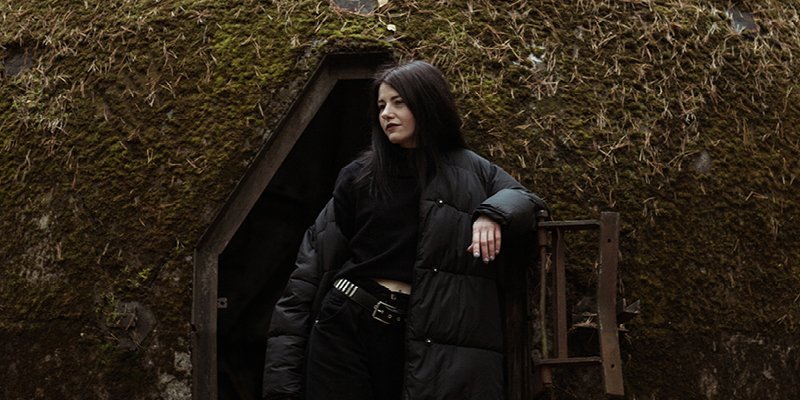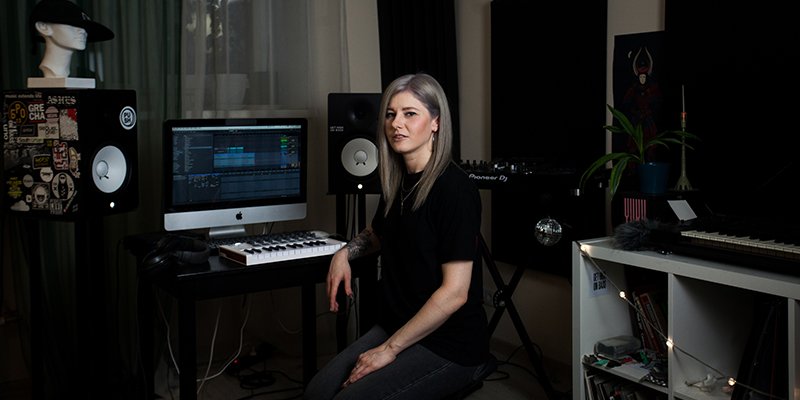Challenge Accepted: How A.Fruit Combines Sound Design for Games with Bass-Forward Production

While many conversations around video games focus on gameplay, graphics or mechanics, sound design is often the element that delivers the emotional depth to create a memorable experience. Upon hearing just a few bars of background music from a familiar game, a player can be transported back into the imaginary universe and its associations – an instant nostalgia trip. This might explain the crossover success of the likes of composer Yuzo Koshiro, whose techno and rave inspired soundtracks for Sega’s ‘Streets of Rage’ franchise have been reissued as vinyl compilations and developed into live shows in recent years. But even the most simple sound effects, like those chosen to indicate an option selected from a game’s menu, provide necessary feedback to the player that they are doing something – these sounds confirm: yes, your input is received and understood.
Atari’s 1972 arcade smash ‘Pong’ is often cited as the first to make use of sound to communicate with the player – two distinctive beeps, programmed an octave apart, indicated whether the ball hit paddle or wall, while a longer and more dissonant shriek can still be recognised by many as a signal of success in the game. Today, music and sound effects can be integral to the success of a new release, from real-life EDM superstars featuring in high-budget titles as another draw to the consumer, to indie studios working closely with celebrated composers to help craft an immersive sound world.
As the industry continues to grow, it’s become an exciting playground for sound designers and composers to hone their skills, while also offering more stability than record sales and touring alone can provide. Russian Anna Derlemenko, stage name A.Fruit, is one artist who has found the game industry to be an ideal supplement to her work as a producer and DJ. While building a name for herself through a busy touring schedule and releases on Hyperboloid, Rua Sound and Med School, by day she works as a sound designer for Charlie Oscar, a game development company based in Vilnius, Lithuania.
“I’m not a gamer, but I played a lot when I was a child. I still have my PS1 standing here for when I need a dose of nostalgia,” she explains from her home in St. Petersburg. At university, she dabbled in some of the most popular titles like ‘Fallout’ and ‘Heavy Rain’, but the decision to work in the industry was one based on a pragmatic inclination to put her production skills to use where they’d be needed. “When I started to make music, I really liked the process of creating sounds, and I was just thinking about how I could find a job where I could make them.”
For a demonstration of Anna's skills, we can look back to the live challenge she took part in at Loop Create. Working with videos she’d never seen before, she revealed her process for bringing visual scenes to life, explaining her approach to creative sound design as she worked. Attendees were encouraged to try out the exercises for themselves, or follow along to see how it’s done. The most challenging part, she recalls, was creating something from real life – the sound of a cat drinking from a crystal bowl.
For this exercise, she limited herself to just using foley, the practice of recording and manipulating real-life everyday sounds to fit what’s on screen. “I think it’s very good for training to give yourself constraints, for example, making a track from only one sample or using only one technique. It can really develop your skill set and way of thinking.”
Learning on the job
The two sides of Anna’s professional life are coordinated in neat symbiosis. A love for music-making led her to seek work in sound design, and the experience of working in that field has, in turn, influenced how she makes music. In particular, her skills in synthesis have benefitted from the requirements of the job – while her earlier records demonstrated a knack for making elegant use of presets, learning more about making sounds from scratch opened the door to advanced creative freedom.
But that doesn’t mean there’s no room for creative expression in commercial projects. While it’s true that a client usually has an idea of what they’re looking for; or even better, a clear brief – Anna relishes the opportunity to contribute with her own ideas. “They have a vision of the product, so you’re there to make something that they want. But there’s always an opening for creativity, especially if you already know the client, so you can imagine what kind of product they want, but you add something from your heart.”
The commercial work also brought discoveries around composition and arrangement. Prior to working in sound design, A.Fruit focused on producing tracks that make sense to a DJ. “It will always have an intro with some hats or something, but when I work with games that’s never the goal.” In fact, she says, when she’s writing music for games, one important consideration is that the track will be looped endlessly, as long as the player remains in the specific area where the music should be heard. “It must be changing, but naturally looping, so that the ending and the intro of the track can be glued together.”
This new, less linear method of working helped Anna to come up with new ways of expressing herself as A.Fruit. The 2018 release ‘Your Inner Sun’, she says, is a good example of this development. “I felt that here I made something not following the rules of club music production, but following the rules of sound design – telling a story through a track, not just making a track for a DJ to play.”
Growing a scene
Although originally from Moscow, Anna moved to St. Petersburg to look for new inspiration – a move, she says, that’s a bit like leaving London for Bristol. But, while Bristol has had a notable role in the many permutations of bass music culture over the years, the scene in St. Petersburg is small in comparison. The parties that do happen have a community feel – she namechecks Grechafunk, Fat Vibez, Urban and Blkroom Community as likeminded collectives and core members of the scene. Her own group, Get High On Bass, focuses on supporting young artists, especially female producers and DJs. “We all know each other, we are all friends. I go to visit their parties, they come to my sets, but it’s nothing serious. You can’t find a party with more than 300 people listening to bass music.”
She often visits her hometown to keep in contact with the wider and more developed scene and make use of the reputation she built before she left. “I have more experience in Moscow. I’m from there, I have more connections, more friends, and more people know what I’m doing. Even though I’ve been in St. Petersburg for almost four years, two of them were pandemic years. I can’t really say that I’m fully assimilated here.” She imagines that when the Get High On Bass events start again, she’ll run them in both cities – furthering the connection between her solid network in Moscow and the fresh energy of the tight-knit and enthusiastic community she’s found in St. Petersburg.
Creating a workspace
When she arrived at the studio provided at her first sound design job, Anna was underwhelmed. “It was just two monitors and a Mac and actually not much else. Just Pro Tools and some VSTs. At that point I realised I can also do the work wherever I want.” These days, she works on both personal and commercial projects in her own studio in St. Petersburg. The setup, while still fairly straightforward, has everything she needs to get to work.
She lists an iMac from 2010, Yamaha HS80m monitors, a MOTU Audio Express interface, and her “old buddy”, the Zoom H4n as the main kit for everyday operations. Her studio philosophy is one of level-headed resourcefulness. During the pandemic, she sold an electric guitar, a launchpad, and a Roland MC-808 – “but I had something to eat. I don’t regret it, I just sold everything that had been standing there for a year without me touching it.” One item she did keep is the Korg DW8000 – the hybrid synth from 1986 that she used to write her first EP.

A. Fruit in her studio in St. Petersburg
Her trusty foley bag provides a lot of the tools to produce sound effects. It contains an assortment of objects in rubber, glass, plastic and metal that provide the variety of textures and timbres required to mimic real-life sounds. But sometimes she has to venture out of the studio and into the world to find a specific gadget to sample. “One game I was working on needed the sounds of some clockwork mechanism. I used my social networks to ask “Hey, does anyone have an old clock to record?” – one that makes a ‘tick-tock’ sound. Then I visited some friends, took the recorder with me and recorded it at the place. I got everything I needed and then came back to the studio.”
Maintaining a balance
Although sound design started as a way to pay the bills, it’s become an integral part of the A.Fruit project – meaning she’s not ready to give it up when touring resumes. “I still love working on commercial projects. It’s not only for money, it’s also an interesting challenge to make music of new genres. I feel that I’m developing as a professional while working on these projects, so in the ideal future I’d just take those orders that are the most exciting, and then make more of my own music.”
This strategy has the potential to strengthen the link between the two sides of her career, while bringing more offers of work to choose from. “Once your music becomes better known, there are people who come to you with a commercial project, and when you ask for a reference for what it should sound like, they say, “We want this to sound like A.Fruit.”
Keep up with A.Fruit on Facebook, Instagram and Soundcloud.
If you’d like to try A.Fruit’s challenge from Loop Create, you can download the video and make your own sounds to match the scene. If you’ve not worked with video in Live before, the Ableton Knowledge Base can help you get started.